What lies in store for 2024 in a number of key areas of manufacturing, including Boeing’s prospects for getting its programmes back into shape, supply chain challenges and likely industry consolidation, and China’s chances of becoming a force in narrowbodies
After a paradoxical year in which the glut of aircraft orders kept coming even while ongoing supply chain pain continued to make ramping up production to meet delivery timelines challenging, the focus on in 2024 will turn to cementing progress made this year.
For Airbus and Boeing this means further lifting production rates, while keeping programmes like the A321XLR, 737 Max 7 and 10 and 777-9s on track for service entry. This must be done against the backdrop of persisting supply chain and reliability issues, which conitnue to crimp aircraft availability
Outside of the big two, regional aircraft manufacturers as well as those in China and Russia are also looping to step up activity in 2024 while it is likely to be a crunch year for a string of electric air taxi hopefuls.
Can Airbus ramp-up without ructions?
Airbus’s attention in 2024 will particularly focus on its single-aisle production, as the airframer strives to meet its entry-into-service target for the long-range A321XLR while managing ramp-up of the broader A320neo family.
The A321neo has become Airbus’s most popular model, with orders exceeding 5,600 aircraft, and the A321XLR version – an aircraft aimed at offering single-aisle economics on routes typically associated with twin-aisle range – is crucial to the manufacturer’s strategy.

Airbus intends to put the twinjet into service in the second quarter, but it has needed to design sufficient safety features for the large aft centre fuel tank, on which the A321XLR’s range depends, without compromising this promised performance by adding excess weight.
A321XLR assembly will have to be smoothly integrated into a production system that Airbus is continuing to ramp up over the course of 2024 – a gradual increase complicated not only by supply-chain pressure but an extensive unscheduled inspection regime for Pratt & Whitney PW1100G engines.
Airbus chief Guillaume Faury has recently appeared confident over the airframer’s ability to cope with the situation.
He says Pratt & Whitney has confirmed it will “stick to [its] commitments to Airbus for our ramp-up” over 2024. “Obviously we’re also paying a lot of attention to the situation, the fleet and the many [aircraft] that will be [grounded] for some time as result of the [engine] recall campaign,” he said during an investor briefing in November.
Faury expects the production mix for the year to be “slightly more in favour” of the rival CFM International Leap engine. But he insists the ramp-up will progress, although he is not giving specific figures for monthly output rates, other than the target of 75 in 2026.
“Obviously the Pratt & Whitney situation is creating lot of additional complexity for us,” he says. “But in spite of those difficulties we’ve found ways of managing the situation with Pratt & Whitney.
“They have commitments to us – that they’ve reconfirmed several times – that they intend to stick to.” (David Kaminski-Morrow)
Will 2024 be Boeing’s year?
It is possible 2024 will see Boeing’s fortunes take a dramatic turn for the positive.
But if the last few years are any indicator, Boeing will instead continue a steady trudge back toward financial and operational health.
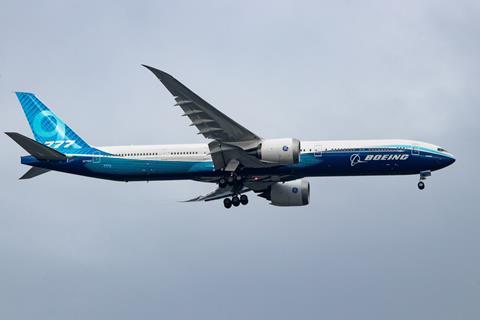
In short, hiccups continue, challenges lie ahead and progress has been slow. But progress has indeed been made. Stability seems to be returning.
Boeing’s 2024 goals are fairly specific: ramp production and deliveries, certificate the 737 Max 7 and Max 10, and resume 737 and 787 deliveries to Chinese customers.
It also must progress toward the 777-9’s certification, lest that programme, pegged for a 2025 first delivery, take another delay.
Achieving those goals remains to some degree beyond Boeing’s control, lying instead with regulators.
But Boeing insists it is making progress.
The company says it intends to begin delivering Max 7s and Max 10s in 2024, while news reports have suggested 737 Max deliveries to China are close to resuming.
The 737 programme is also showing broader resilience. Boeing has been hiking 737 production, aiming to hit a 38-monthly rate, and executives have pointed to more near-term rate hikes. Boeing landed orders for 686 737s in 2023 through November, putting it on track to meet or exceed 2022’s orders.
Boeing’s 737 delivery pace slowed recently due to a quality problem involving defective aft-pressure bulkheads. But the manufacturer says it is completing required inspections of undelivered jets and has stuck to its long-term 737 production targets.
The 787 programme is a particular bright spot. Demand for the widebody accelerated in recent months, with Boeing landing 245 787 orders last year through November, up significantly year on year. Boeing also hiked 787 deliveries to 62 in the first 11 months of 2023, twice as many as in 2022. (Jon Hemmerdinger)
More pain for supply chain?
Aerospace executives largely say supply chain troubles are getting better and will continue easing in 2024, as companies continue addressing pressures like labour shortages.
But one of the largest aerospace suppliers – engine Pratt & Whitney – seems likely to be an outlier.
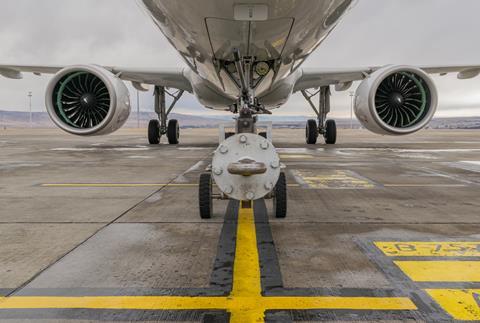
Last year, as supply chains seemed to be stabilising, came news from P&W that it is recalling some 1,200 PW1100G geared turbofans, which power Airbus A320neo-family jets.
Labour and parts shortages are common headaches across suppliers, but the PW1100G problem is unique to Connecticut-based P&W, placing it under enormous pressure to fix a problem with massive implications.
The issue involves high-pressure turbine and high-pressure compressor disks that P&W and the Federal Aviation Administration say may have shorter life limits than expected due to manufacturing problems.
This is no small matter. In 2024, airlines will likely ground hundreds of A320neo-family jets at any given time for PW1100G maintenance, leaving some airline executives fuming. Air Transat said in December that one-third of its A321LRs could be grounded in late 2024 as a result.
Replacing affected parts will necessitate shop stays lasting 250-300 days per engine, P&W says. That places significant pressure on maintenance providers, many of which had already been unable to meet demand.
The disruption hits as airlines clamour for more jets to meet expanding post-pandemic travel demand and as engine makers and other suppliers have made progress in ramping production.
The sheer scope of the PW1100G problems may overshadow that progress, but several indications suggest many suppliers are getting on track.
As evidence, Boeing chief executive David Calhoun said in October 2023 that the 737 supply chain was ready for a rate hike from 31 jets monthly to 38. He said supplier quality problems, not “not actual supply chain constrains”, were limiting production. (Jon Hemmerdinger)
What chance a regional rebound?
The big two airframers may be back to accumulating record amounts of orders, but for the remaining two regional aircraft manufacturers the recovery from Covid-19 has been much slower.
While the industry waits to see what impact electric and other disruptive propulsion might have on this sector when new types arrive late in the decade, in the meantime, ATR and Embraer remain in recovery mode from what have been a difficult period.
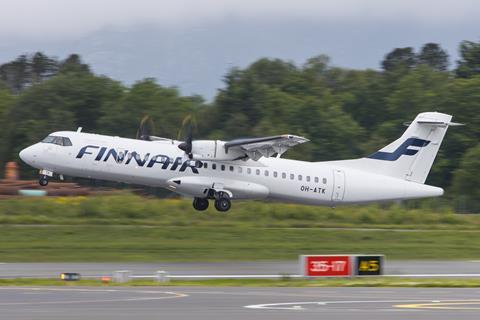
At the Dubai air show, Embraer executives were confidently predicting that airlines would soon resort to E-Jets to fill a gap in the market, a “second wave” of commitments to follow that for narrowbodies and widebodies.
Embraer had been dealt a double blow in 2020. Aside from the pandemic – which disproportionately affected the smaller airlines that form its traditional customer base – Boeing dramatically abandoned its merger with the Brazilian firm’s commercial aircraft arm.
On the surface, Embraer’s E190-E2 and E195-E2 should be doing well. The closest Airbus and Boeing rivals, the A220, A319neo, and 737 Max 7, have not been the strongest sellers. Embraer claims its E2 pairing is much more economical on shorter, thinner routes. The E175 also gives the manufacturer a monopoly in smaller regional jets.
Embraer says it has been nurturing potential customers and 2024 could see a “harvest season”, according to chief executive Francisco Gomes Neto.
However, bouncing back will not be easy. Parts shortages generally and problems with the Pratt & Whitney Geared Turbofan engine family are likely to continue affecting production in 2024, although Embraer insists the PW1900G variant that powers the E2 is less affected by quality issues than the Airbus A320neo family’s PW1100G. Pilot scope clause contracts in the USA also prohibit most airlines from operating the E175, making a re-engined E2 version a non-starter.
Meanwhile, ATR, the only manufacturer producing large turboprops still standing, insists its recovery is on track.
With final production numbers to be confirmed, the Franco-Italian airframer was aiming to deliver at least 40 aircraft and achieve a 1:1 book to bill ratio this year. For the airframer, however, parts supply has been as much a challenge as aircraft demand, and that problem is unlikely to go away in 2024. An acceptable outcome next year will see ATR break the 50 deliveries mark.
While ATR’s traditional rival – the one-time Bombardier Q400 – is no longer built by De Havilland Canada, that firm does have a new(ish) product. It is resuming production of the Twin Otter 300 after 35 years. A smaller variant of the Series 400, the 19-seater is set for delivery in 2024.
Resumption of Series 400 and Dash 8 400 (formerly Q400) production looks a more distant prospect, although De Havilland, which has a factory near Calgary under construction, says it is committed to doing that. (Murdo Morrison)
Russia’s dormant revolution
With the pipeline of Western aircraft closed and serial production of newly-developed aircraft – the Yakovlev MC-21, SJ-100, and Ilyushin Il-114-300 – yet to ramp up, the Russian air transport industry is going through a dormant phase.
Russian president Vladimir Putin reiterated, during a briefing on 14 November, that the country’s aerospace industry planned to manufacture over 1,000 aircraft by 2030, adding that it also needed develop the higher-thrust Aviadvigatel PD-35 engine.
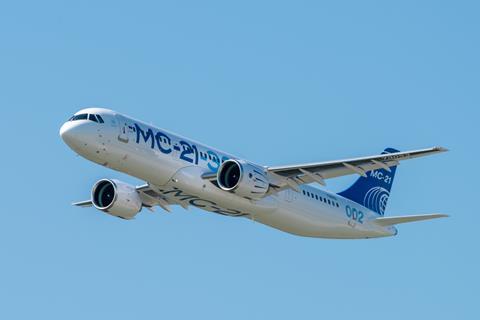
“This will enable us to increase the number of long-haul aircraft, including the Il-96-400,” he stated. The Il-96-400M carried out its maiden flight on 1 November, while an Il-96-400T has just been revived for cargo operations with Sky Gates.
Putin said the country’s airlines were “very overloaded” with foreign-built aircraft, adding: “It would be better to take the time to create a market for domestic equipment.”
Tupolev Tu-214s – which are already in, albeit limited, production – are viewed as an option for capacity bridging.
But there remains considerable uncertainty as to whether this domestic market, with demanding certification, production and ramp-up tasks, combined with labour pressure, can close the gap before international sanctions start affecting Russian airline operations.
Air safety is not only a concern for Russian carriers; any major mishap could be weaponised against the sanctions regime.
Federal air transport regulator Rosaviatsia states that there is “no trend towards an increase in the number of aviation incidents”. Over the first 11 months of 2023, it adds, the number declined by 1.3%. Although about 60% related to technical failures of aircraft or engines, this also amounted to a reduction on the previous year.
This is despite a 6.5% increase in Russian airspace use by domestic operators. Rosaviatsia airworthiness department head Mikhail Vasilenkov says “modified approaches and technological solutions” have enabled an increase in flight hours while maintaining a “high level of flight safety” for Russian airlines.
Rosaviatsia has certified 445 maintenance and repair stations, it says, and the six largest have 23 hangar complexes. “Logistics chains are available,” adds Vasilenkov, which means carriers receive required spares and components. (David Kaminski-Morrow)
Can Comac breakout beyond China?
By most accounts, Comac’s C919 programme has had a good year: fresh from being certificated by Chinese regulators, the type entered commercial service with launch customer China Eastern Airlines.
Comac would later rack up more orders for the programme: first from Hainan Airlines units Suparna Airlines and Urumqi Air for 60 aircraft, and later, from China Eastern for an additional 100 units.
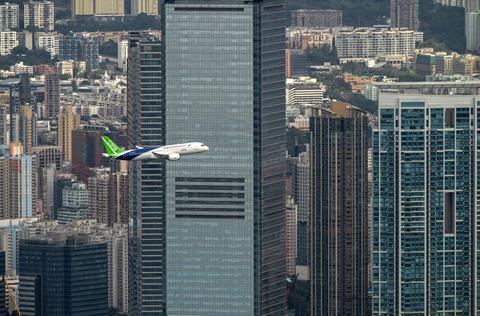
The aircraft also performed its first sortie outside of Mainland China, operating a demonstration flight in Hong Kong’s downtown Victoria Harbour in mid-December.
Given how long it took to get the C919 into commercial service, the programme’s recent activities are not a bad look at all.
Indeed, China has pinned high hopes on the C919 programme, touting it as a homegrown alternative to the Boeing 737 and Airbus A320 family.
Comac’s other programmes also hit significant milestones, after a dormant period amid China’s strict pandemic curbs. The ARJ21 regional jet, for example, entered service with its first foreign customer – TransNusa Airlines in Indonesia.
Indeed, Comac is slowly but surely signalling its seriousness in being an airframer of scale. While much of its activity is still focused on the Greater China region, Comac is likely to focus on moving beyond – with some help from Beijing’s global influence.
There has been some progress: at least one Chinese-backed start-up – Gallop Air from Brunei – has indicated interest in operating the C919.
Still, it must be said that the C919 – while a Chinese aircraft programme – is still very reliant on Western technologies.
There have been efforts to shift to domestic technologies but this would take time, and the longer-term success of the programme – and of Comac at large – depends on how quickly and successfully this shift happens. (Alfred Chua)
Will AAM soar in 2024?
So far, no major electric air taxi companies have collapsed and regulators have been generally supportive of targeted timelines for certification. But will next year see the electric vertical take-off and landing bubble burst?
Currently, there are no glaring red flags, with industry analysts viewing many of the sector’s leaders to be in relatively stable financial positions. And those companies have big plans for the year ahead.
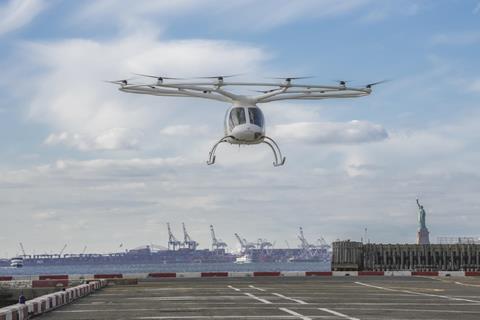
Germany’s Volocopter is seeking not only a splashy introduction at the Summer Olympics in Paris but certification of its VoloCity air taxi with EASA sometime in the middle of the year.
Meanwhile, after becoming the world’s first electric vertical take-off and landing (eVTOL) maker to obtain certification for its aircraft, China’s EHang will seek to establish regular commercial operations with its autonomous, two-passenger EH216-S.
US electric vertical take-off and landing (eVTOL) makers are hot on their heels, with a trio of start-ups – Archer Aviation, Beta Technologies and Joby Aviation – all pushing for FAA certification of their respective air taxis by the middle of the decade.
Still, certification is far from guaranteed. For example, all three could trip over the FAA’s two-control requirement for flight training, since their aircraft are designed to seat one pilot. And that is just one issue that could cause potentially costly delays.
Analysts expect to gain more clarity on individual players’ prospects for certificating eVTOL aircraft as flight-test and certification programmes advance in the second half of 2024. By then, it should be apparent whether storm clouds are gathering over the eVTOL sector, or it is set to soar. (Howard Hardee)
Consolidation on the cards?
The 2020 mega merger of Raytheon and United Technologies saw RTX emerge as the industry’s largest player by revenue. Post Covid, merger and acquisition activity has cooled as manufacturers have focused on repairing balance sheets, sorting their supply chains, and returning to 2019 levels of production. However, as the industry regains its swagger, do not rule out medium-scale consolidation or even something big in 2024.
We already know a couple of significant developments. BAE Systems’ acquisition of US business Ball Aerospace for around $4.8 billion should close in the first half. L3Harris – which in 2023 purchased rocket engine maker Aerojet Rocketdyne – is divesting its commercial aviation arm, which offers avionics and pilot training, to venture capital firm TJC for $800 million to pay-down debt and focus on defence. Again, the transaction is expected to complete in the first six months.

One outcome of the creation of RTX was that regulators insisted United Technologies divest businesses that overlapped with Raytheon’s portfolio to preserve competition. One of these was the actuation and flight control arm of its Collins Aerospace unit. Safran wants to buy it, but in November the Italian government put the brakes on the deal by objecting to part of the sale because it involves Microtecnica, a company it regards as holding strategic know-how.
EDGE and SAMI, the deep-pocketed national defence houses of the United Arab Emirates and Saudi Arabia, respectively, are also on the acquisition trail as they bid to bolster their countries’ domestic design and manufacturing capabilities. However, any swoops are likely to be stakes in relatively niche, family-run businesses with promising technologies, but which fall under the radar of being national defence assets.
With some dozen start-ups pursuing the dream of mass producing electric vertical take-off and landing (eVTOL) aircraft, that slowly emerging sector also looks ripe for rationalization as once-patient investors start to demand a clear route to a return on their investment. Wisk owner Boeing has already invested in Archer as part of a resolution of a dispute between the two developers. Could we see other marriages of convenience as financial pressures grow?
Troubled aerostructures specialist Spirit AeroSystems could be a takeover candidate. The tier one has struggled to stay in the black since its airframer customers began ramping up production again after the pandemic. However, the obvious suitor, Boeing, which spun off Spirit almost 20 years ago, has ruled out buying it. Will Airbus and Boeing have to ride to the rescue of other smaller but strategic suppliers to meet their production commitments.
Italian airframer Piaggio is one acquisition that would be big news, if only for its surprise value. The venerable maker of the Avanti twin-pusher has been in administration and for sale since 2018 when owner Mubadala of Abu Dhabi pulled out. Italy’s biggest aerospace company Leonardo is not interested, but the government is reluctant to let it die. Late in 2023, for the umpteenth time, would-be bidders were invited to submit their turnaround plans. Do not hold your breath. (Murdo Morrison)


























